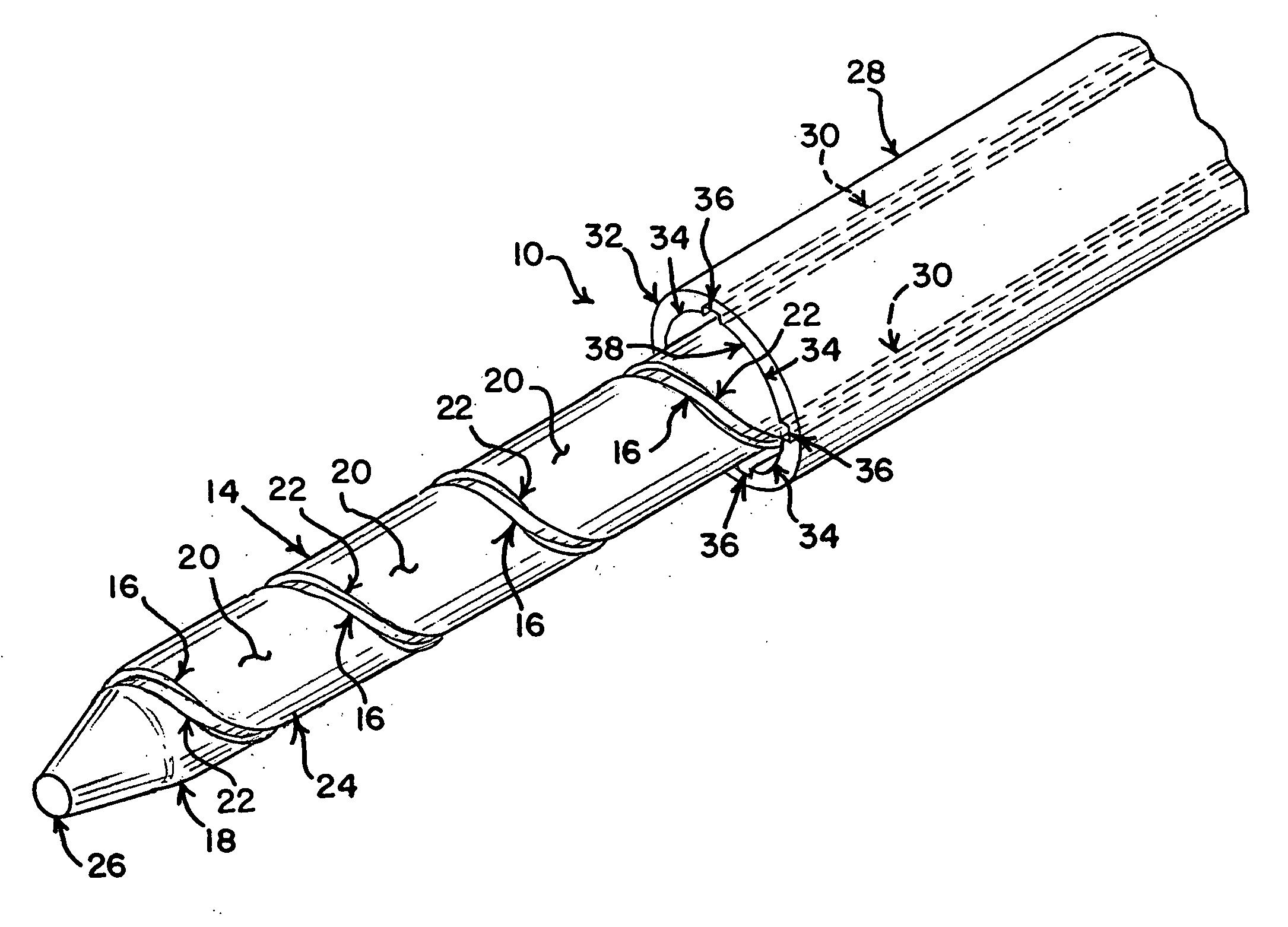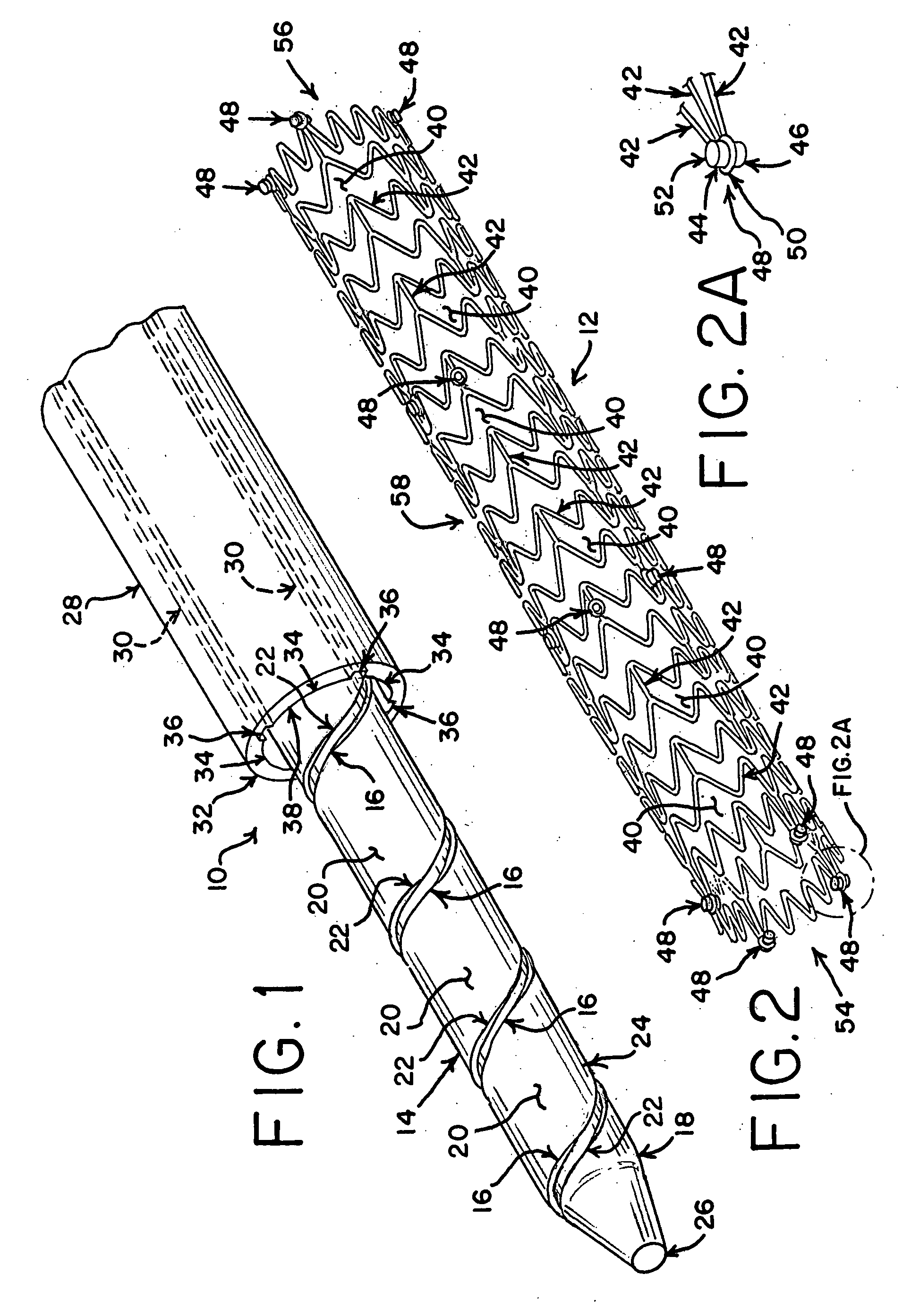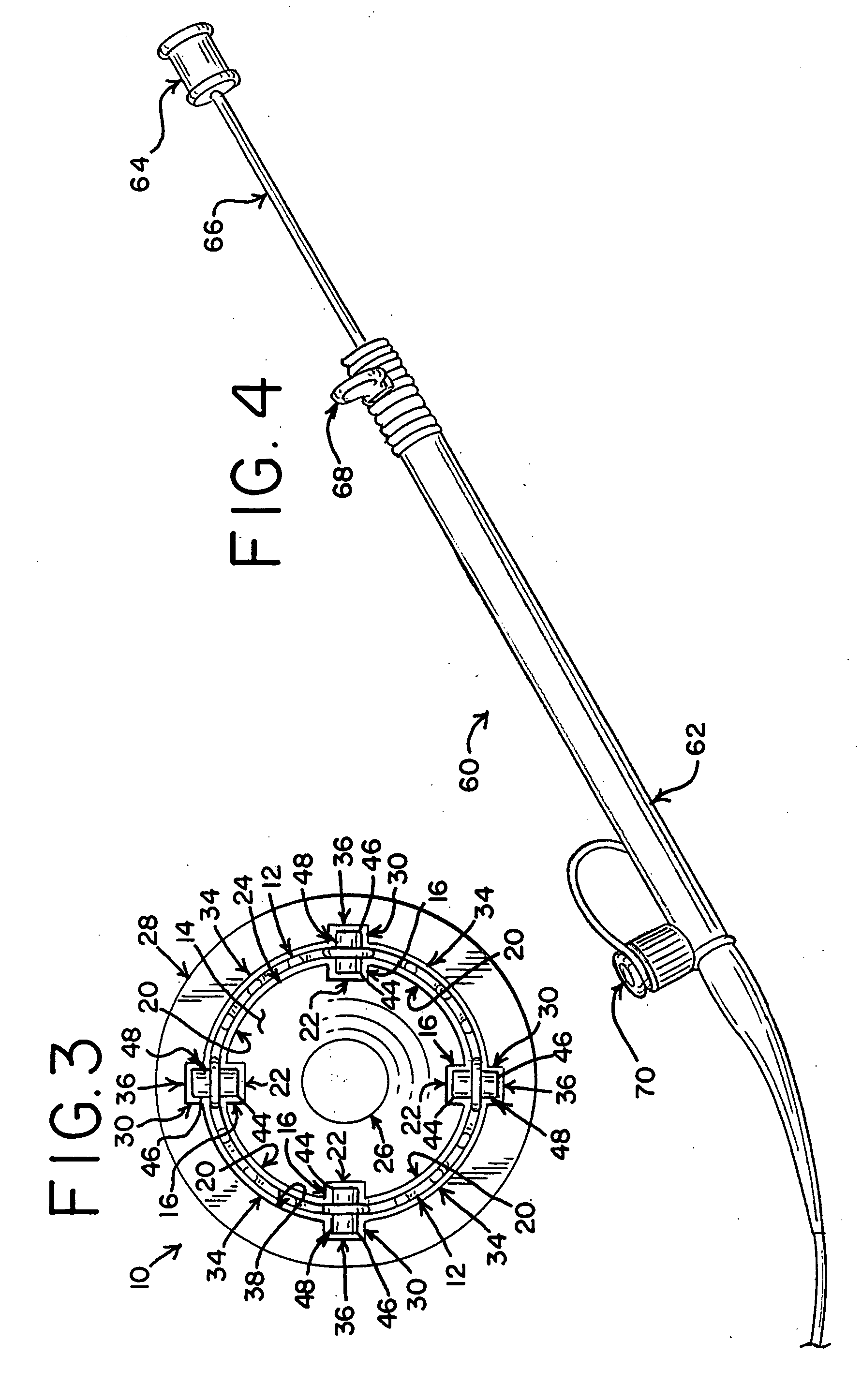Delivery system with helical shaft
- Summary
- Abstract
- Description
- Claims
- Application Information
AI Technical Summary
Problems solved by technology
Method used
Image
Examples
Embodiment Construction
[0023] Referring now to the drawings, a delivery system 10 for medical devices is shown. In particular, the embodiment shown and described is adapted for intravascular delivery of a self-expandable stent 12. However, the structure taught herein may also be adapted for other uses as well.
[0024] As shown in FIG. 1, the delivery system 10 includes a shaft 14, or core, with a helical groove 16 along a portion of the distal end 18 of the shaft 14. The helical groove 16 is defined by a helical raised region 20 and a helical recessed region 22. Thus, the interposition of the helical raised region 20 and the helical recessed region 22 forms a helical groove 16. The helical raised region 20 may form the outer circumference 24 of the shaft 14. A guidewire lumen 26 is provided through the shaft 14 to allow a guidewire to pass axially through the delivery system 10. The delivery system 10 also includes a sheath 28 that surrounds the shaft 14 and may be moved longitudinally relative to the shaf...
PUM
 Login to View More
Login to View More Abstract
Description
Claims
Application Information
 Login to View More
Login to View More - R&D
- Intellectual Property
- Life Sciences
- Materials
- Tech Scout
- Unparalleled Data Quality
- Higher Quality Content
- 60% Fewer Hallucinations
Browse by: Latest US Patents, China's latest patents, Technical Efficacy Thesaurus, Application Domain, Technology Topic, Popular Technical Reports.
© 2025 PatSnap. All rights reserved.Legal|Privacy policy|Modern Slavery Act Transparency Statement|Sitemap|About US| Contact US: help@patsnap.com



